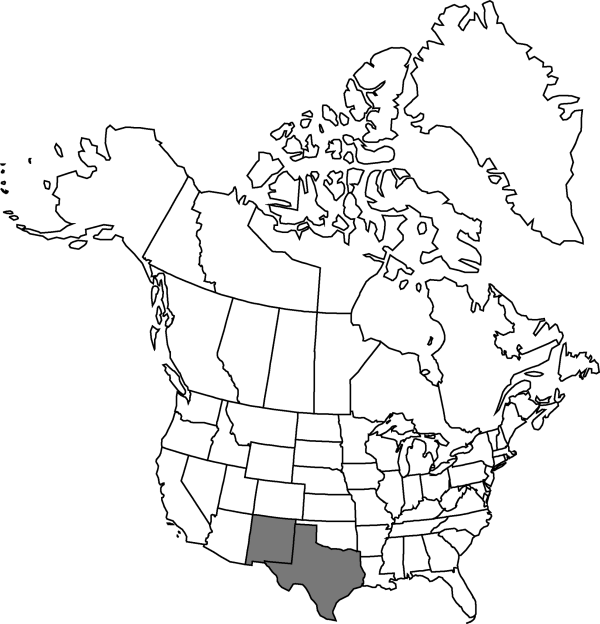Phemeranthus longipes
Novon 11: 320. 2001.
Plants to 1.5 dm; roots slender, elongate, tortuous, woody. Stems ± erect, simple or branching, sometimes bearing persistent midribs of dead leaves basally, suffrutescent. Leaves sessile; blade terete, 1–2.5 cm. Inflorescences cymose, much overtopping leaves; peduncle scapelike, to 12 cm. Flowers: sepals deciduous, often pinkish, orbiculate to suborbiculate, 2–3 mm; petals pink, obovate, 4–5 mm; stamens 10; stigmas 3, linear. Capsules subglobose, 3.5 mm. Seeds with arcuate ridges, 1 mm.
Phenology: Flowering Jul–Sep.
Habitat: Open areas in canyons and on slopes, and crests
Elevation: 1600-2000 m
Distribution

N.Mex., Tex., n Mexico (Tamaulipas).
Discussion
Phemeranthus longipes is easily confused with smaller specimens of P. parviflorus, which it resembles in general aspect; the two are most readily distinguished by seed surface, sepal shape, root character, and stamen number. The presence of spinelike persistent leaf midribs at the stem bases has been regarded as a diagnostic feature of P. longipes; not all plants exhibit this condition, however, and some of P. parviflorus approach it closely.
Selected References
None.